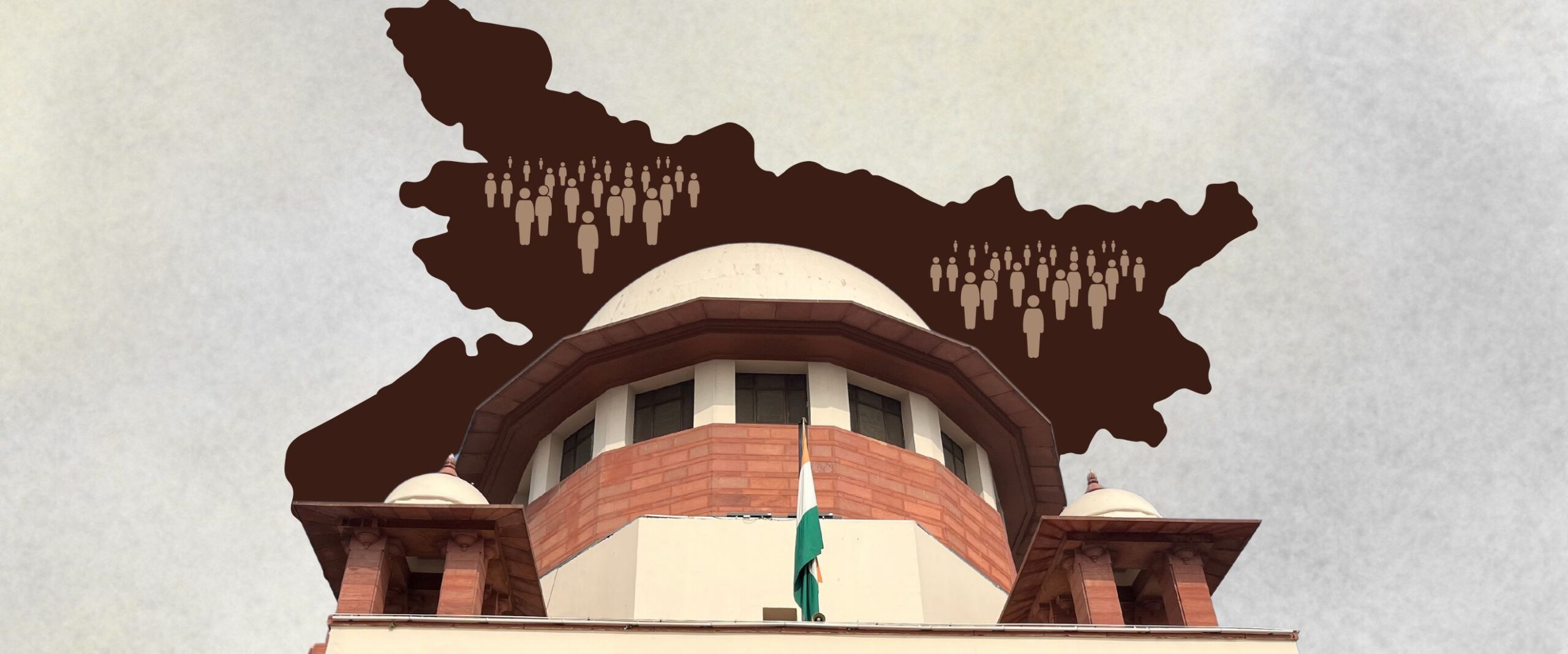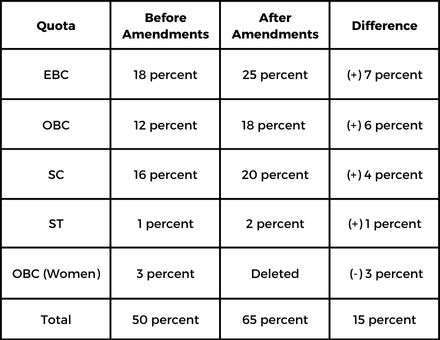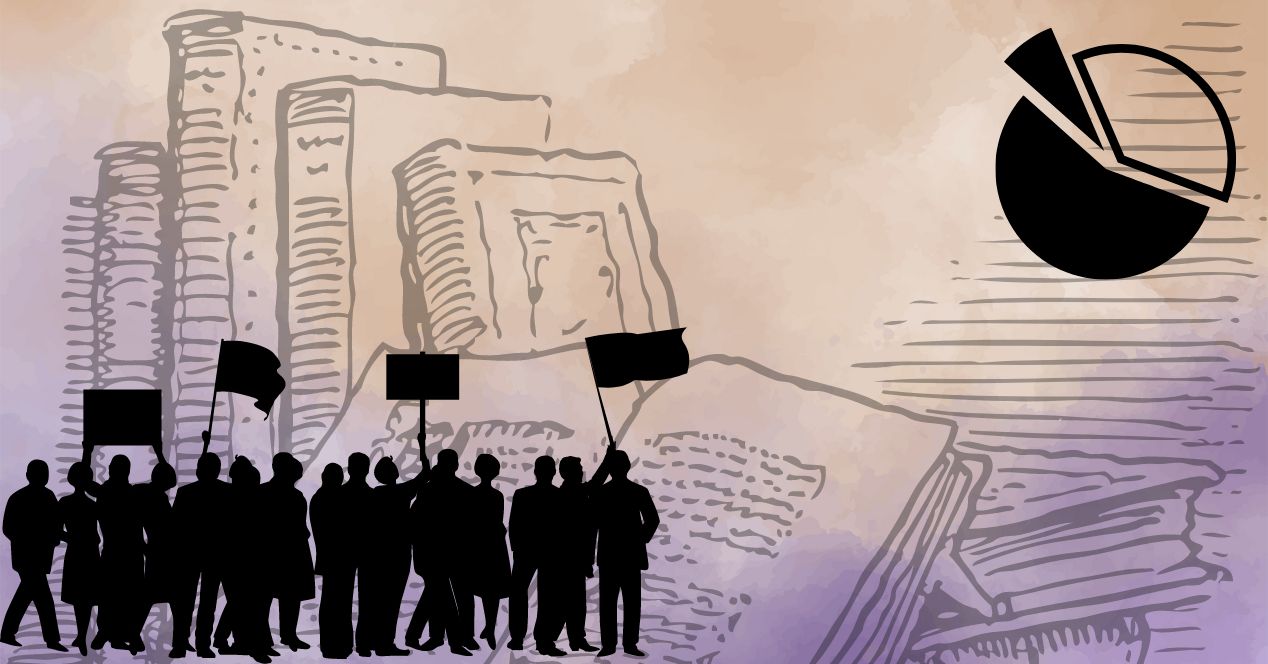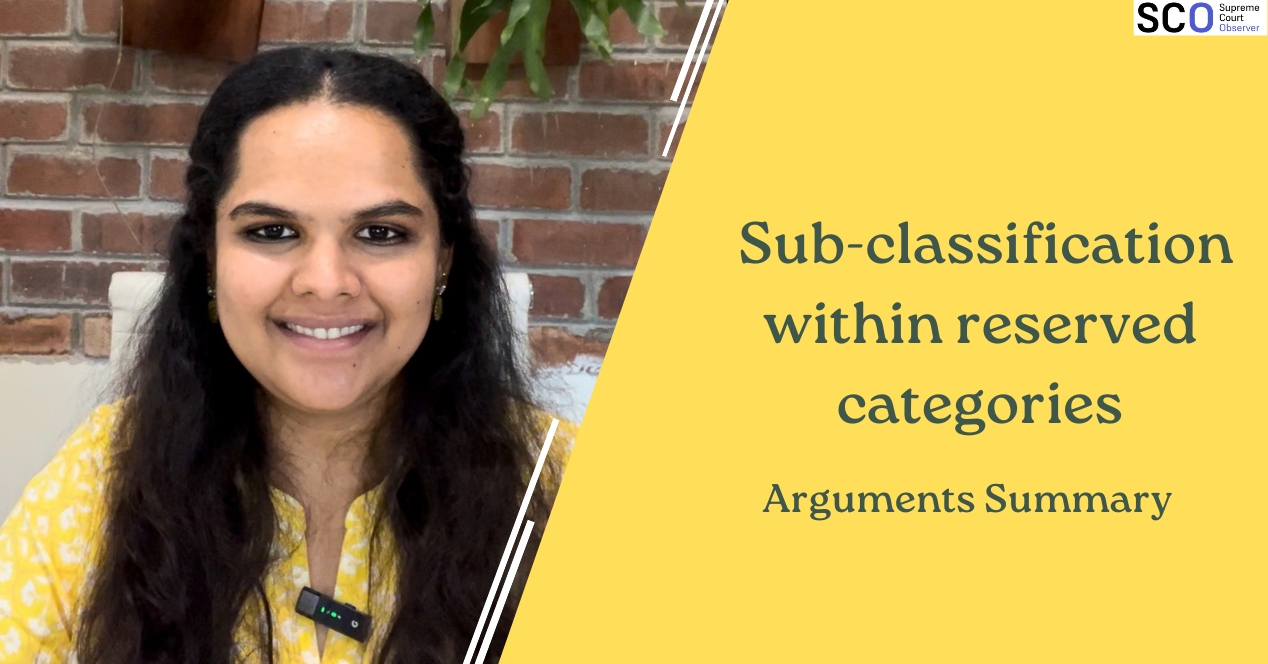Analysis
What is the Bihar government’s 65 percent reservation quota challenge in the Supreme Court?
The Bihar government has appealed against a Patna HC decision which declared its 65 percent reservation in the state as unconstitutional

Today, the Supreme Court refused to stay the Patna High Court’s decision to declare the Bihar government’s 65 percent reservation in educational and public employment as unconstitutional.
The Bihar government had relied on the data collected in the Bihar Caste Survey conducted between June 2022 and August 2023 to increase the reservation quota for Other Backward Classes (OBC), Extremely Backward Classes (EBC), Scheduled Caste (SC), and Scheduled Tribe (ST). A petition challenging the validity of the Caste Survey is also pending at the Supreme Court.
Those challenging the 65 percent quota had argued that it breached the 50 percent limit on reservations imposed by the 1992 judgement in Indra Sawhney v Union of India (1992).
How was the quota increased to 65 percent?
On 9 November 2023, the Bihar Legislative Assembly passed the Bihar (In admission in Educational Institutions) Reservation (Amendment) Act, 2023 and the Bihar Reservation Of Vacancies In Posts And Services (For Scheduled Castes, Scheduled Tribes And Other Backward Classes) (Amendment) Act, 2023. The Amendments increased reservations for EBC, OBC, SC, and ST communities from 50 to 65 percent in educational institutions and government jobs.
The Bill was unanimously passed by the Assembly a month after the Bihar government published the report of the Caste Survey carried out in the state. The government claimed that the Survey was carried out with the intent to strengthen government policies. With an additional 10 percent reservation for economically weaker sections, the total quota for reservation in Bihar stood at 75 percent.
The quota for OBC, SC, ST, and EBC was increased to 65 percent in the following manner:

At the Patna High Court
Petitioners argued that the Amendments were passed hastily without any analysis of the data in the Caste Survey. They argued that the Bihar government did not consider the economic criteria, an important index on which reservation is considered. Instead, they focused on population data. Petitioners further argued that the reservation breached the 50 percent limit on reservations as laid down in Indra Sawhney, and by extension, violated basic structure of the Constitution.
Next the petitioners pointed fingers at the Survey itself. They argued that the Caste Survey excluded certain communities from being considered as backward classes. The Caste Survey had based its data on communities that had experienced social and economic progress in recent years, and did not need affirmative action policies to aid them any longer. This, they argued, frustrated merit and excluded deserving communities from getting representation in public education and employment. These added reservations along with horizontal reservations granted to women, grandchildren of freedom fighters, and persons with disabilities, petitioners argued, further chipped away the number of unreserved seats left for the general category.
The Bihar government responded that the 50 percent ceiling limit was not a hard and fast rule. It can be breached in instances where there is a sufficient cause, which in this case was that the majority population in Bihar had lesser claim to positions in educational and government institutions. The Government further argued that the Caste Survey was a study of the entire population of Bihar, including their social, economic, and educational status. The data was “objective” and not based on a “subjective opinion.” They submitted that 98 lakh families in Bihar, belonging to backward communities, earned below ₹6,000/- a month. The report stated that 85 percent of the population in Bihar belonged to backward communities. The Bihar government argued that it would be unfair for the 15 percent privileged and unreserved population to have access to 50 percent of seats in public education or government positions.
What did the Patna High Court say?
On 20 June 2024, the Patna High Court declared both Amendments as unconstitutional.
Relying on the Caste Survey report, the High Court found that the backward classes including SC and ST communities occupied a total of 68.52 percent of the total posts in government employment. “Be that as it may, the fact remains that backward communities are adequately represented in public employment, by virtue of reservation and also merit” the High Court held. They stated that “adequate representation now exists and there is no valid ground for breach of 50 [percent] rule; which in any way is not permissible.”
The High Court recommended the Bihar government to check which backward communities are more likely to be able to secure seats through merit. It stated that the Caste Survey report was unable to demonstrate a case for an exceptional circumstance where the 50 percent ceiling limit could be breached for uplifting the marginalised sections. According to the Bench, the data showed the opposite.
While it was not mandatory for the state governments to consult an expert committee in drafting reservation policies, the Patna High Court stated: “What worries us is the fact of no such exercise or analysis having been done by the Government or the Legislature in bringing about the Amendment Acts.” They stated that the Bihar government took a “frog leap” into passing the Amendments within days of the Caste Survey report. The Amendments were impermissible, as a proportionate representation was unfounded under Articles 15(4) and 16(4) of the Constitution.
The High Court noted that the economic and social status of castes needs to be considered before extending reservations. There is the likelihood that certain communities may have improved considerably, while some may have not at all. If such an exercise is not carried out, “there would be situations in which one or more of the castes which had developed better than the others would continue to appropriate the benefits because of the social and financial capital they had achieved over the years.”
On the aspect of merit, the High Court stated that it cannot be completely “effaced and sacrificed.” Such was the principle, when the 50 percent ceiling limit was made a mandatory rule. The High Court found no “extenuating circumstance” where the Bihar government could breach the rule.
What happened at the Supreme Court?
On 2 July 2024, the Bihar government appealed against the decision. The first hearing took place today, on 29 July. The Bihar government was represented by Solicitor General Tushar Mehta and Senior Advocate Shyam Divan.
By then, Bihar Chief Minister Nitish Kumar had switched his alliance and joined the BJP to form the new Bihar government in February 2024. Moreover, the Janata Dal (United) had also joined hands with the BJP to form the ruling National Democratic Alliance government after the 2024 Elections. Accusations of using the Caste Survey for vote bank politics were long forgotten. With water under the bridge, the new Bihar government was all set to defend the 65 percent quota.
Divan requested the top court to grant interim relief staying the Patna High Court decision. He referred to a similar decision of the Chhattisgarh High Court to persuade the Bench. Divan was referring to a May 2023 interim order, where the Supreme Court stayed a 2012 decision of the Chhattisgarh High Court which blocked the implementation of a 58 percent reservation scheme. Chhattisgarh has since brought back the 58 percent quota in the state.
The Chief Justice D.Y. Chandrachud led bench was not convinced on granting the interim relief at this stage. CJI Chandrachud suggested listing the case for hearings in September 2024. Divan pressed that the case was likely to be listed before a larger bench and therefore, an interim stay was necessary at the current stage. The Bench did not budge and repeated that the case will be heard in September.




